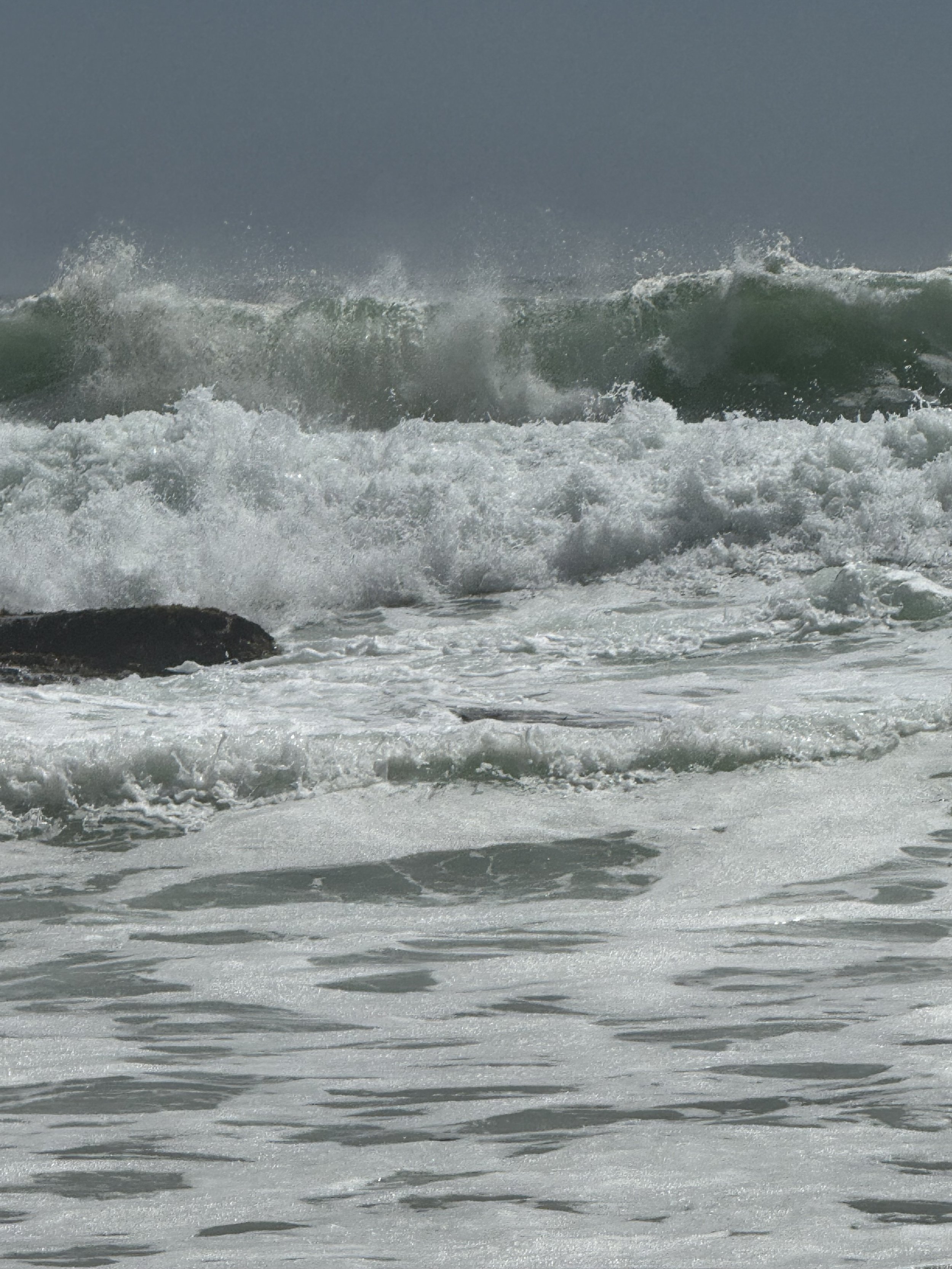Continental Divide
Reflections on the power of nature and man while visiting South Africa.
The resonance of the sea dominates
night and day:
a measured metronome, lulling the mind to rest,
then suddenly an erratic explosion,
waking the heart to vigilance.
We watch wind’s energy transferred to water.
Its shimmering skin swells with slow and low
undulation,
rolling diagonally from horizon to shore.
Some rise to steep crests that break under their
own weight into troughs of liquid emerald below.
Some survive the race to shore,
bursting on dark folds of sedimentary stone,
formed five hundred million years ago
by heat and pressure,
then scarred by willful wind and water.
Energy spent,
the waves wash over and swirl around
masses of golden granite,
convulsed from the earth’s belly as hot magma
when ancient continents collided.
Evidence of their liquid origin remain
in prehistoric, lithified boulders and veins,
embellished
with sparkling feldspar and black mica.
Their fluid force once intruded weaker clefts,
splitting the sedimentary slope
that rises from the sea
to sandstone cliffs above.
My pulse alternately joins the calm beat
of the metronome and the violent crash
of curls on shore.
I think of other waves,
with equal energy and destructive force,
across the Atlantic.
Their energy a slowing gathering tsunami,
spawned from some deep quake,
poised to surge over and displace our sea level,
leaving little time to seek higher ground.
What clefts will they expose, ream, and intrude?
What scree will remain in their wake,
for others to excavate, examine, and name?
Who will be tugged under the rush of raging tide,
splintered on jagged stone,
or lost in the inevitable ebb?
Will someone surface, rise, and repair
our continental divide?
Or have the powerful forgotten the promise
of those who will inherit the earth?
Many thanks to John Rogers: geologist, author, and kindred spirit who has opened my eyes to a new world of natural beauty and patiently answered my neophyte questions about the science he loves.









